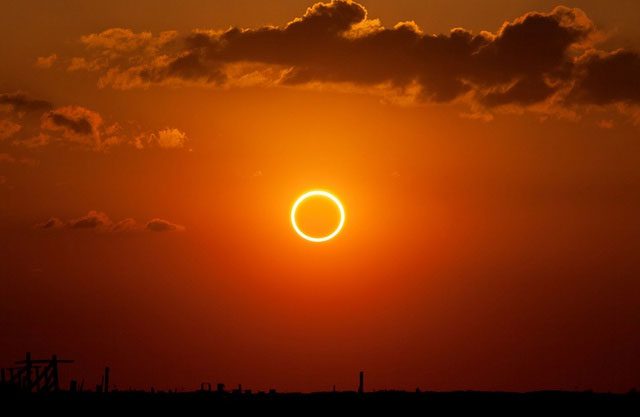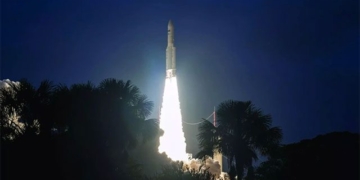Millions of people across the Americas will have the chance to witness an exciting astronomical phenomenon on October 14th, which is an annular solar eclipse (when the Moon appears to cover the Sun).
Vietnam Will Not See an Annular Solar Eclipse for Another 8 Years
An annular solar eclipse occurs when the Moon is too far from the Earth to completely cover the Sun. This results in a ring of light surrounding the disk of the Moon. During an annular eclipse, the solar corona cannot be seen. The path of the eclipse will begin in the Pacific Ocean, off the southern coast of Canada, and move across the southwestern United States, Central America, Colombia, and Brazil. A partial eclipse will be visible throughout North and South America.

An annular solar eclipse is an exciting astronomical event eagerly anticipated by many.
According to the Vietnam Astronomical and Astrophysical Society, on October 14th, some areas in the Americas will witness an annular solar eclipse. This phenomenon occurs when the Moon moves between the Earth and the Sun, but at a time when it is at a farther point in its orbit (near apogee), preventing it from completely covering the Sun. As a result, instead of a total solar eclipse, observers will see a part of the Sun revealed as a ring of light surrounding the Moon.
Unfortunately, in Vietnam, we will not be able to observe this annular solar eclipse. Besides a few instances of minimal coverage that are negligible, only the southern provinces of Vietnam will see a significant eclipse in 2028. For the northern region, observers will have to wait until May 2031.
The Moon will nearly cover the Sun when viewed from Earth, but in reality, the Moon is much smaller than the Sun; however, it is much closer to our planet. The diameter of the Moon is 3,476 km compared to the Sun’s diameter of about 1.4 million km and the Earth’s diameter of 12,742 km.
Experts warn that it is unsafe to look directly at the dazzling Sun without using specialized eye protection designed for viewing solar eclipses. Since the Sun is never completely obscured by the Moon during an annular eclipse, looking directly at it without eye protection is unsafe.
Fascinating Astronomical Events in October
According to the Hanoi Astronomy Association (HAS), many fascinating astronomical events will occur in October. First is the Draconid Meteor Shower on October 8th and 9th. The Draconids are a minor meteor shower that typically produces about 10 meteors per hour. This meteor shower will peak on the night of October 8th. The meteors will radiate from the constellation Draco but can appear anywhere in the sky.
On October 15th, the Moon will be aligned with the Earth in relation to the Sun and will not be visible in the night sky. This phase occurs at 00:56. This is the best time to observe faint celestial bodies like galaxies and star clusters, as they will not be affected by moonlight.
On October 20th and 21st, the Orionid Meteor Shower will be present, which is an average meteor shower producing up to 20 meteors per hour at its peak. It is created by leftover dust from Halley’s Comet, known and observed since ancient times. This meteor shower occurs annually from October 2nd to November 7th, with this year’s peak on the night of October 21st.
On October 23rd, Venus will reach its greatest western elongation. Venus will reach its greatest eastern elongation, up to 46.4 degrees from the Sun. This is the best time to view Venus as it will be at its highest point above the horizon in the morning sky. Look for this bright planet in the eastern sky before sunrise.
On October 29th, there will be a full moon and a partial lunar eclipse. A partial lunar eclipse occurs when the Moon passes through a part of the Earth’s shadow, known as the penumbra, and only part of the Moon moves through the darkest area known as the umbra. In this type of lunar eclipse, part of the Moon will darken as it moves through the Earth’s shadow. The lunar eclipse will be visible across Europe, Asia, Africa, and western Australia.




















































